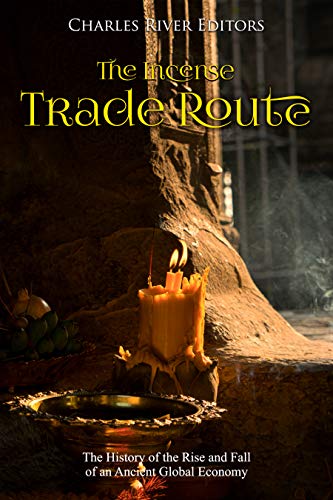The Incense Trade Route: The History of the Rise and Fall of an Ancient Global Economy
*Includes pictures*Includes ancient accounts*Includes online resources and a bibliography for further reading*Includes a table of contents “The trade with Arabia and India in incense and spices became increasingly important, and Greeks for the first time began to trade directly with India. The discovery, or rediscovery, of the sea-route to India is attributed to a certain
*Includes pictures
*Includes ancient accounts
*Includes online resources and a bibliography for further reading
*Includes a table of contents
“The trade with Arabia and India in incense and spices became increasingly important, and Greeks for the first time began to trade directly with India. The discovery, or rediscovery, of the sea-route to India is attributed to a certain Eudoxos, who was sent out for this purpose towards the end of the reign of Ptolemy Euergetes II (died 116 BC). Eudoxos made two voyages to India, and subsequently, having quarrelled with his Ptolemaic employers, perished in an unsuccessful attempt to open up an alternative sea route to India, free of Ptolemaic control, by sailing around Africa. The establishment of direct contacts between Egypt and India was probably made possible by a weakening of Arab power at this period, for the Sabaean kingdom of South-western Arabia collapsed and was replaced by Himyarite Kingdom around 115 BC. Imports into Egypt of cinnamon and other eastern spices, such as pepper, increased substantially, though the Indian Ocean trade remained for the moment on quite a small scale, no more than twenty Egyptian ships venturing outside the Red Sea each year.” – John Donnelly Fage
The history of the ancient incense trade routes often falls victim to the excitement of the stories of important men and women, as well as the conquest and empire building that constantly changed the organization of the ancient world. Yet the importance of these interlocking trade networks and the economies built around them cannot be denied. Ancient sources clearly delineate the immense demand for frankincense and myrrh, and later other spices and exotic products, that spanned for over a millennium, peaking between the 4th century BCE and the 2nd century CE Even the Christian Bible indicates the importance of these commodities. It tells that the three men who came to visit Christ from the East brought their most valuable gifts; frankincense, myrrh, and gold. Trade ports and international emporiums developed, which would not be rivaled again until the modern era, and ancient civilizations rose and fell on the interconnected economy that was built around the trade.
The most obvious of these is the great Roman Republic and Empire, which used customs taxes on luxury products along the incense route to subsidize its expensive costs of maintenance. It was a system that allowed Rome to reach the very heights of prosperity and extravagance, but also one that ultimately contributed to the decline and fall of one of the strongest kingdoms in history. An investigation into the history of the incense trade is of particular interest considering the parallels that exist between the past and the world economy of the present day.
The Incense Trade Route: The History of the Rise and Fall of an Ancient Global Economy looks at the development of this crucial trade, and its impact on antiquity. Along with pictures depicting important people, places, and events, you will learn about the incense trade like never before.
Bestsellers 2021
Auto Amazon Links: No products found.







Comments
Comments are disabled for this post.